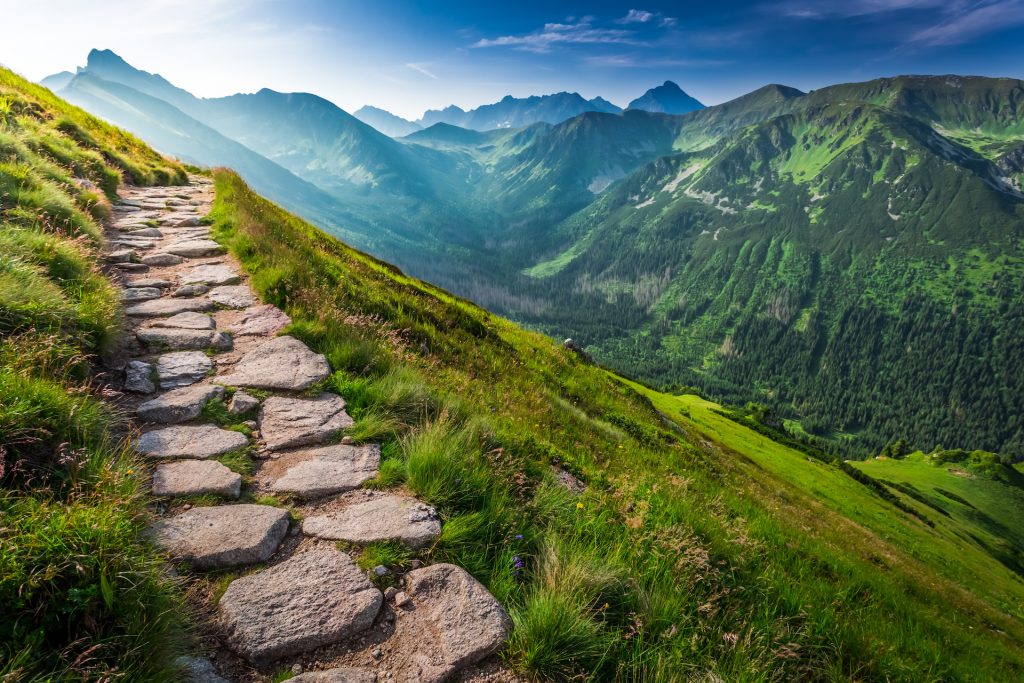HERITAGE
Poland has always been a country of a significant ethnic and religious diversity. All the nations which used to live here, i.e. Germans, Austrians, Italians, French, Swedes, Russians, Armenians, Lithuanians, Ukrainians, Sephardic and Ashkenazi Jews, and Tatars had a great impact on the Polish culture and history. Poland is the only country in the world which created its own name for a republic state: “Rzeczpospolita”, the meaning of which carries also the connotation of national heritage. The second and most influential Polish royal dynasty of Jagiellonians was founded by Ladislaus Jagiello, a Lithuanian duke. Twice in our history, the Polish throne was claimed by a woman; both were crowned as a KING of Poland. Since 1573, the Polish gentry had elected a king by means of a democratic election, and the elected kings came from France, Hungary, Sweden and the Free State of Saxony. The most important Polish poet Adam Mickiewicz was born in Lithuania and regarded it as his motherland. The majority of Polish homes and churches have a picture replica of the Black Madonna who is regarded by Poles as the Queen of Poland. This XII century Bizantine icon presents an Armenian woman with dark carnation and a baby in her hands, and is the most important object of the religious cult in Poland. This is our heritage.
ROYAL CITY KRAKOW
Krakow reflects best the multicultural heritage and rich history of Poland. The name of the town (spelled with K) relates to its location in 1257 based on the German Magdeburg Law. The most famous affluent patrons of the St. Mary’s Basilica were Italian (the Montelupi and Cellari families), and the main altar there was designed by Veit Stoss, a German from Nuremberg. Francesco Fiorentino from Italy built the royal castle here, and one of most famous castle interior decorators was Albrecht Durer’s younger brother, Hans. The most famous Krakow student was Nicolaus Copernicus, but in his times the largest ethnic groups of students were Hungarians and Czechs. One of the Krakow symbols is Lajkonik, a Tatar figure riding a small pony. It dates back to the XIII century when Krakow was invaded by the Tatars. The first president of Krakow was Joseph Dietl, an Austrian, who introduced a precedent of nominating a representative of the Krakow Jewish community as one of his deputies. For a Sunday dinner in Krakow you will get a Wiener Schnitzel and a chicken soup cooked with the use of „włoszczyzna” (a Polish name, which actually means “Italian stuff”), the vegetables brought to Poland in the XVI century by the most famous Polish Queen – Bona Sforza, an Italian. The Krakow public transport (horse driven trams), the first fire brigade and the first brass band were established on request of an Emperor Franz Joseph. We also borrowed from the Austrian tradition our Christmas customs. Please, contact us for details!
POLISH SACRAL AND WOODEN ARCHITECTURE
Poland is deeply rooted in the European Roman-catholic culture. A church stands at every street corner in Krakow and streets here are filled with walking nuns, priests and monks in traditional habits. You will also find here a lot of places related to John Paul II. This is a typical impression that every tourist who visits Poland for the first time will express. The sacral architecture here is extremely varied and testifies to the remarkable wealth of the royal family, the nobility and founders of numerous abbeys, monasteries and convents. The list includes the Cistercian Abbey in Nowa Huta, the Benedictine Abbey in Tyniec, and the Churches of St. Bernadine’s, Dominican, Franciscan, Jesuit and St. Clare’s Orders. Of course, the most important is St. Mary’s Basilica in the Main Square, with the largest gothic altar from the XV century and carved by Veit Stoss from Nuremberg. The wooden architecture is typical for the Polish countryside and mastered by the Polish Gorals. The decorations that can be found in these buildings are regarded as the best examples of the Polish primitive and folk art, mainly made by amateur artists, and is admired for its rich and attentiveness to the spiritual aspects of religious life. The Lesser Poland region prides itself with the longest tourist trail of the wooden architecture in Europe. Please, contact us for details!
JEWISH HERITAGE IN POLAND
Before the World War II, Poland was home to the largest Jewish population in the world amounting to as many as 3.5 million people. Warsaw, the capital of Poland, had the Jewish community of 0.5 million, which made it the second largest Jewish town in the world, just after the New York City. POLIN is the name of Poland in Hebrew, which actually means “here you shall find rest”. The first historical mention about Krakow was written in 965 by Ibrahim Ibn Jacob, a Jewish merchant from Tortosa. The Jews lived in Poland for almost 700 years, exerting a significant influence on the local culture, history and tradition. Kazimierz in Krakow is one of the best preserved Jewish living quarters in Europe and an ideal place to present all cultural aspects of the Polish Diaspora. By learning more about the input this community had made into the history of Poland and Krakow, you will be able to understand more about the scale of the destruction and the Holocaust brought upon this part of Europe by the World War II. Please, contact us for details!
SOLIDARITY AND COMMUNISM PERIOD
One of the most important periods of the Polish contemporary history belongs to the Solidarity movement and Lech Wałęsa, the Nobel Peace Prize winner. The Solidarity logo is one of the most recognizable trade marks in today’s world, and for the promotion of which not a single penny was spent. That period in Krakow is strictly related to one of its living quarters, i.e. Nowa Huta, which is regarded nowadays as one of the most significant examples of social realism architecture. Nowa Huta is a quite remarkable phenomenon and one of the rising stars among the greatest Krakow tourist attractions. It was built as a model town for the working class, mostly employed at the Lenin Steelworks. In the 1980s the place had become the place of a large-scale, mass strikes and protests against the communist rules in Poland. Nowa Huta fascinates the visitors with its extraordinary history, unmatched urban design solutions and beautiful sacral architecture which includes, among others, the Cistercian Abbey dating back to 1222, the XVI century wooden church of St. Bartolommeo’s and the Our Lord’s Ark – a boat-shaped church built under the patronage of Karol Cardinal Wojtyła, the future Pope John Paul II. A visit to Nowa Huta will take you completely by surprise and will change your perception of the communist era for ever. Please, contact us for details!
POLISH CASTLES AND MANOR HOUSES
The most renowned residency in Poland is the Royal Castle in Krakow, designed and built in the XVI century by Italians as a commission from the Polish royal family. The Polish nobility and gentry imitated the design of this structure while building their residencies and at the same time following the latest trends in the European architecture of that time; hence the popular name of the “Little Wawel” used by the historians in reference to the Castles in Pieskowa Skała or Niepołomice, the style and form of which are confusingly similar to the royal residence. Approximately 200 castles and fortresses (well preserved or in total ruins) are scattered across the Lesser Poland and Silesia regions. The best know examples include the medieval castles along the Trail of the Eagles’ Nests and the residencies reclaimed by the legitimate owners after the period of communism and then restored to their initial grandness. Such examples include the Castle in Wiśnicz, the Palace in Moszna (Silesia), or the Manor House in Sierakow, not far away from Krakow. Please, contact us for details!












